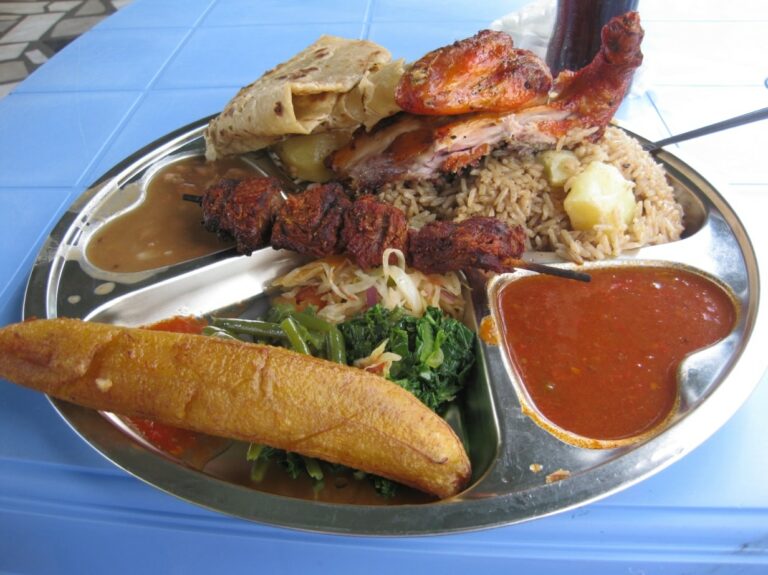Introduction: A Blend of Indian and Arab Flavors
Tanzania, a country located in East Africa, is known for its diverse cultural influences that can be seen in its culinary traditions. The cuisine of Tanzania is a fusion of Indian and Arab flavors. This is because of the historical trade routes that connected the East African coast with the Middle East and India. As a result, the Tanzanian cuisine has been influenced by these two cultures, which have left a lasting impact on the country’s food traditions.
Indian Influence: Spices and Vegetarian Dishes
Indian cuisine has had a significant influence on Tanzanian food. The cuisine of India is known for its rich and varied spices, which have been incorporated into Tanzanian dishes. Indian spices such as cumin, coriander, turmeric, and cardamom are used extensively in Tanzanian cooking. One of the most popular Indian-influenced dishes in Tanzania is the samosa, which is a snack filled with vegetables or meat. Vegetarian dishes such as lentil curry and spinach with paneer are also popular in Tanzania and have been adopted from Indian cuisine.
Arab Influence: Meat and Rice Dishes
Arab cuisine has also made a significant impact on Tanzanian cuisine. The use of meat, particularly lamb, beef, and chicken, is very common in Arab-influenced dishes. Tanzanian biryani, a dish that consists of spiced rice and meat, is a perfect example of the influence of Arab cuisine. The dish is commonly served during special occasions and is a staple in Tanzanian homes. Another Arab-influenced dish is pilau, which is a spiced rice dish that is usually served with meat.
Swahili Cuisine: Merging of Indian and Arab
Swahili cuisine is a fusion of Indian and Arab flavors that have been merged together to create unique dishes. This cuisine is prevalent in the coastal regions of Tanzania, where the Arabs and Indians had the most significant influence. Swahili cooking is characterized by its use of spices and coconut milk. One of the most popular Swahili dishes is the Zanzibar mix, which is a spicy dish consisting of potatoes, cassava, and meat.
Common Ingredients: Spices, Coconut, and Tomatoes
Spices such as cumin, coriander, cardamom, and turmeric are commonly used in Tanzanian cuisine. Coconut milk is also an essential ingredient in Tanzanian cooking, particularly in Swahili cuisine. Tomatoes are also a common ingredient in Tanzanian dishes, adding a tart and sweet flavor to the food.
Conclusion: The Rich Culinary Heritage of Tanzania
Tanzanian cuisine is rich in flavor and history, influenced by Indian and Arab cultures that have left their mark on the country’s food traditions. The fusion of these two cultures has resulted in unique and delicious dishes that are enjoyed by locals and tourists alike. The use of spices, coconut milk, and tomatoes is a common thread that runs through Tanzanian cuisine, adding depth and complexity to the flavors. Tanzania’s culinary heritage is a testament to the country’s diverse cultural influences and is a must-try experience for anyone who visits the country.

